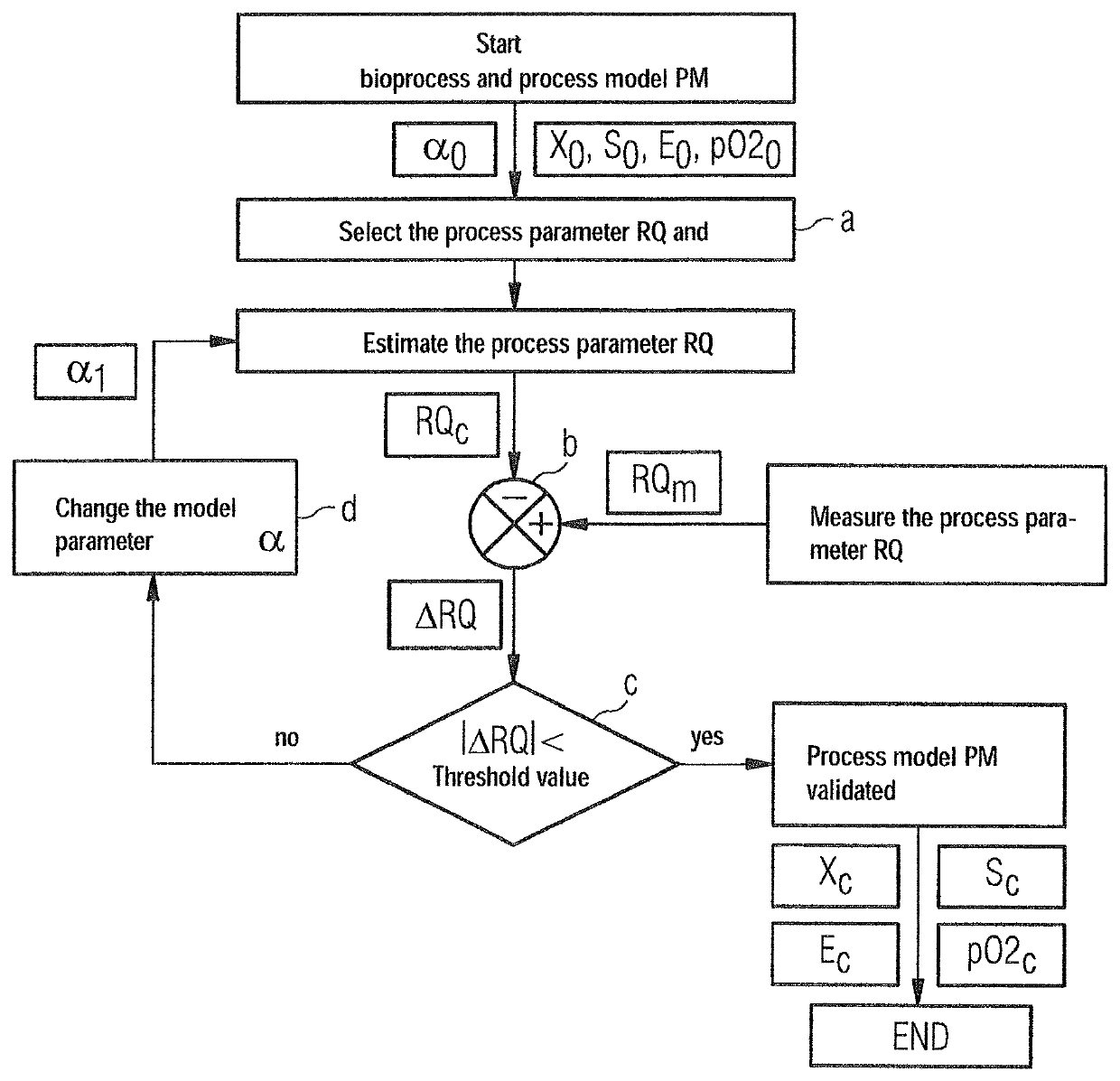Method for monitoring bioprocesses
a bioprocess and monitoring technology, applied in the field of bioengineering, can solve the problems of inability to infer, unable to achieve inferential measurement, and unable to achieve complex static model approaches, etc., and achieve the effect of measuring very easily in real tim
- Summary
- Abstract
- Description
- Claims
- Application Information
AI Technical Summary
Benefits of technology
Problems solved by technology
Method used
Image
Examples
Embodiment Construction
[0029]The FIGURE shows a schematic representation of an exemplary course of the inventive method for monitoring bioprocesses based on an exemplary bio or fermentation process with baker's yeast or S. cerevisiae as biomass X. Other bioactive organisms (fungi, bacteria), such as E. coli, or mold, can however also be employed as biomass X in bioprocesses. The bio or fermentation process typically occurs in a bioreactor, in which the environmental and reaction conditions can be optimized and controlled for a bioprocess, such as a fermentation with baker's yeast. To this end, during the bioprocess various environmental and / or process parameters X, S, E, pO2, RQ are regulated and / or measured in the bioreactor such as pH value, temperature, oxygen supply, nitrogen supply, mixer settings, glucose concentration S, concentration of the biomass X or of the substance E to be produced (e.g. ethanol), concentration of dissolved oxygen pO2 or what is known as the respiratory quotient RQ.
[0030]Moni...
PUM
| Property | Measurement | Unit |
|---|---|---|
| time | aaaaa | aaaaa |
| threshold | aaaaa | aaaaa |
| bioactive | aaaaa | aaaaa |
Abstract
Description
Claims
Application Information
 Login to View More
Login to View More - R&D
- Intellectual Property
- Life Sciences
- Materials
- Tech Scout
- Unparalleled Data Quality
- Higher Quality Content
- 60% Fewer Hallucinations
Browse by: Latest US Patents, China's latest patents, Technical Efficacy Thesaurus, Application Domain, Technology Topic, Popular Technical Reports.
© 2025 PatSnap. All rights reserved.Legal|Privacy policy|Modern Slavery Act Transparency Statement|Sitemap|About US| Contact US: help@patsnap.com

